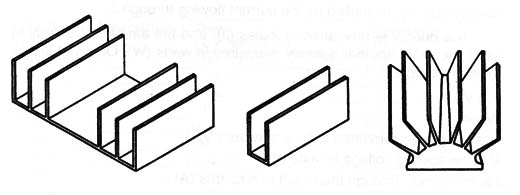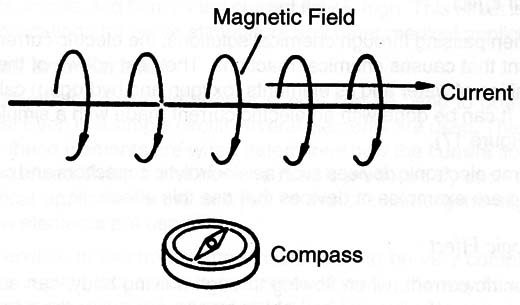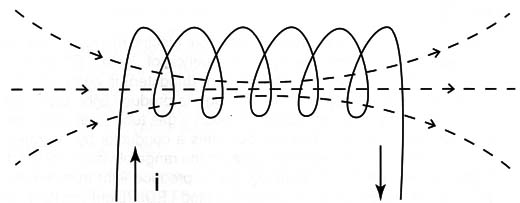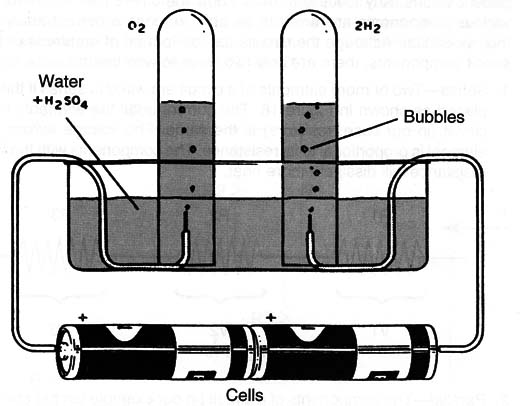Since the electric and electronic devices as well as appliances use all the effects of an electric current it is very important to any reader to remember what these effects are and how they are used.
Thermal Effect or Joule Effect
When passing through any device or circuit presenting an electric resistance, the result of a current flow is that the energy spent in the process is converted into heat.
This effect is also known as Joule’s Effect. The amount of energy released can by calculated by Joule’s Law.
Joule’s Law says that the amount of heat dissipated each second or converted into heat by a device with a constant resistance is given by the voltage applied, multiplied by the current flowing through it.
The energy is measured in joules (J), and the amount of energy in each second is another quantity measured in watts (W). One watt is one joule per second.
P = V x l
Where:
P is the power converted in heat in watts (W)
V is the applied voltage in volts (V)
l is the current through the circuit in amperes (A)
Since current and voltage depend on the resistance, the next formulas are useful to calculate the converted power:
P = R x l2
and
P = V2/R
Where:
R is the resistance in Ω
Be aware there are many other formulas involved in electronic calculations that depend on the application and the complexity of the involved circuit. These are very simple and important to the reader who wants to start with electronics.
To those who want to go on to higher levels and have a useful handbook of electronic formulas and calculations for reference, the Sourcebook for Electronics Calculations: Formulas and Tables is an excellent source. (Also written by Newton C. Braga and published by Prompt® Publications.)
Many electronic devices use the Joule Effect as a basis of operation; others have the production of heat only as a result of their operation. Some devices where heat is the basis of operation are incandescent lamps, heaters, and boilers.
Other devices produce heat using this effect, but as a consequence of their operation. In this case, the heat must be eliminated in order to avoid causing damage to the device. Some electronic components producing large amounts of heat must be mounted in heatsinks (Figure 1).

The function of a heat sink is to transfer heat generated by the devices to the air, and in some cases, with the aid of some forced process. Small fans can be used. The electrician will also observe that many circuits are very sensitive to the excess heat produced by components. Heat is the origin of many device failures.
Luminous Effect
There are many ways to produce light from electric energy. The most common way can be considered a consequence of Joule’s Effect.
In a common incandescent lamp a metal filament (tungsten) is heated by the electric current to a temperature high enough to produce light. Light can also be produced by a current flowing through a gas tube as in neon, xenon and fluorescent lamps. The gas becomes a conductor by ionization and in this process electromagnetic waves in the range of visible, infrared, and ultraviolet are produced.
Another way to produce light from electric current is found in electronic components called LEDs (Light Emitting Diodes) whose operation principle is addressed in other articles in this site.
Magnetic Effect
This is the only effect that ever occurs independent of the material in which the electric current flows. A Danish researcher named Oesterd discovered, with a simple experiment, that the movement of electric charges through a wire (current) produces a magnetic field as shown in Figure 2.

Magnetic field lines involve having the wire oriented in a manner that depends on the direction of the current flow. This effect can be used in many electronic devices. If a current flows through a wire formed into a coil, for example, the magnetic field can be concentrated inside it as shown in Figure 3.

Other researchers found that the inverse effect also exists; if a wire is cut by a magnetic field, an electric current is induced. Devices such as solenoids, electromagnets, relays, motors, loudspeakers, and many others operate based on this effect. These devices include transducers and sensors.
Chemical Effect
When passing through chemical solutions, the electric current can be the agent that causes chemical reactions. The best known of them is decomposition of water and its elements (oxygen and hydrogen) called electrolysis. It can be done with an electric current made with a simple experiment (Figure 4).

Some electronic devices such as electrolytic capacitors and cells when charging are examples of devices that use this effect.
Physiologic Effect
Electric current, when flowing through a living body, can act on that body. For example, in humans electric current can excite the nervous system. It can cause a little itching sensation when the current flow is very low or severe shocks and burns if the current flow is high. This effect is used in some applications for nerve stimulators and other medical applications.




